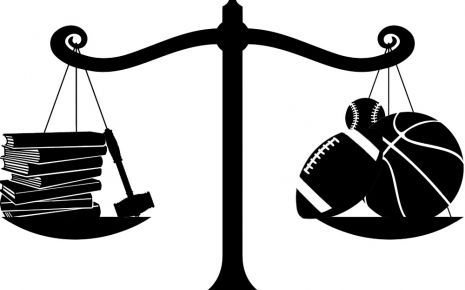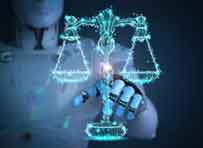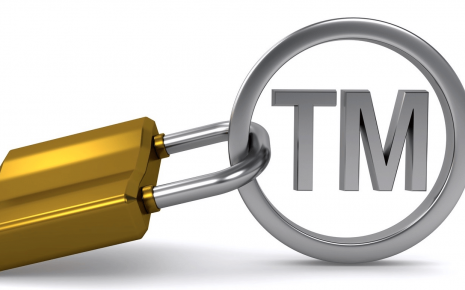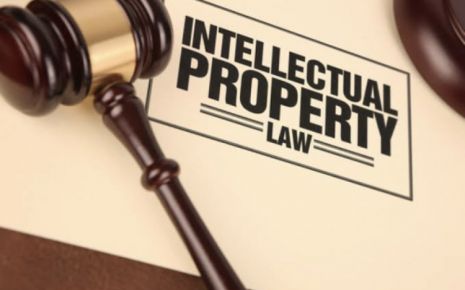The Art Of Copyright: Guarding Street Art, Protest Art And Graffiti
The adornment of streets, alleyways and public avenues across the world with
varied forms of art, especially during socio-political movements and revolutions
brings forth alongside important messages - the issue of artists' rights over
their creations. Considered largely as illegitimate forms of expressions, such
works, including protest art, street art and graffiti have often failed to be
categorized as 'artistic works' that can be deemed protectable under the purview
of law. In contemporary times however, these creations, encompassing slogans and
images have obtained the limelight owing to acclamations associated with it.
The glimpses of such work therefore have not only been witnessed in public spaces of major cities, utilized frequently by businesses, corporations as well as influencers for attracting sections of society driven by social media aesthetics[1] but has also formed a central part of varied movements ranging from the 2011 Egyptian revolution and the international 'Black Lives Matter' campaign to the Shaheen Bagh led anti-citizenship amendment protests in India.
This paper, while viewing these different artforms through the prism of intellectual property rights, especially that of copyright laws shall thereby deliberate upon certain fundamental aspects. Firstly, the scope of copyright protection given to 'artistic works' would be examined with special focus on India, alongside assessing whether such safeguards are provided to all types of art.
Secondly, the obstacles that pose as difficulties in relation to the guarding of rights of creations such as street art, protest art and graffiti will be highlighted upon. Thirdly, the current positions of law and the jurisprudence of courts across jurisdictions with relation to such arts will also be analyzed and lastly, through acute deliberation a central question would be answered - whether copyright protection should be extended to works such as protest art, street art and graffiti under the tenets of law?
The arena of copyright protection encompasses certain exclusive rights that are provided to the creator by virtue of his work. Such safeguards have not only been envisaged under the 1886 Berne Convention for the Protection of Literary and Artistic Works, an international agreement relating to copyright that asserted the need to provide 'creators, including painters and artists the means to control the usage of their works by third parties'[2] but has also over the years been incorporated within the ambits of domestic law. In India for example, the Copyright Act of 1957 states explicitly, upholding the rights of creators that copyright subsists in artistic works.[3]
Moreover, the meaning and scope of such works have also been elucidated under Section 2(c) of the statute - ranging from paintings, sculptures, drawings, engravings, photographs to architectural works.[4] More importantly, the incorporation of the terms 'any other works of artistic craftsmanship'[5] has further widened the scope of what can be regarded as copyrightable in terms of creations of art. Similar statutory attempts have moreover also been made under different jurisdictions to protect the rights of artists through different copyright based acts and introduction of other legislations such as the Visual Artists Rights Act of 1990 present in the United States.
Even though such broad protections are provided in terms of law, many artforms, such as street art, protest art and graffiti have often faced difficulties in availing these guaranteed safeguards despite meeting the two essential requirements for copyright protection - originality of the work and such original creations being fixed in a tangible medium.[6] A major reason for such inequitable treatment is rooted in the 'unclean hands doctrine' - the notion that the plaintiff should not be allowed protection or remedy when they have carried out acts that are unethical, illegal or made in bad faith.[7] As the canvasses that such creators and artists use for the creation of such works are often walls, buildings owned by third parties and equipments meant for the larger public - the doctrine, in association with charges of vandalism has often been used by defendants in multiple cases and has also been backed by courts of law on certain occasions.
While in Villa v. Pearson Education, Inc the court, in its dicta stated the need to determine legality of circumstances for creation of such art, [8] the judiciary in Pollara v. Seymour[9] as well as in English v. B.F.C. & R East 11th Street LLC also asserted that VARA, a major tool in protecting artists rights would not apply for cases where such arts were installed in an illicit manner.[10]
Concerns have also been raised based on the difficult notion as to with whom the rights to the art is to be held in cases where such creations are made on walls and buildings that are not owned by the artist - the creator or the owner of such structures? As this conflict between the landowners' property rights and the artists moral rights lies unclear with no proper remedy, the jurisprudence remains ambiguous - resulting further in a lacuna in copyright treatises that then fails to embody specificities regarding works such as street art and graffiti.[11] Other obstacles also further deter safeguards to these forms of art.
On one hand, varied assertions have been made that the works were meant to be part of the public domain owing to their nature[12] and that such works were indeed meant to be mischievous, rather than artistic as stated by the court in Tracy v. Skate Key, Inc., while denying copyright registration to a particular form of graffiti[13], while on the other hand, issues surrounding the anonymity of artists is also a relevant reality. Since most creators of street art and graffiti choose to display their art in public avenues and structures that they do not own, issues of legality remain present.
When claims of intellectual property rights over their works are made by such artists before courts of law, their identity tends to be revealed, further leaving them vulnerable against possible charges of criminal nature such as vandalism. Moreover, the repercussions of protest art can be much severe owing to its political, anti-establishment features. This issue of non-disclosure of identity affecting chances of attaining exclusive rights over their own creations was also witnessed in the recent legal defeats of Banksy, an anonymous graffiti artist popular around the world for his socio-political works.
The European Union Intellectual Property Office, invalidating his trademark over the 'Flower Thrower' as well as his 'Laugh Now, but one day we'll be in charge' piece ruled against the artist stating that owing to his anonymity, Banksy could not be identified as the unquestionable owner of such works.[14]
Apart from these wide array of challenges and obstacles, another fundamental issue that remains in relation to the rights of such artists and the protection of their works is the confused, limited and vastly contrasting jurisprudence across and within jurisdictions. With regards to illegality, while cases such as the Pearson Education Inc., the court has implied the need for the works of art to be legal[15] - in Mitchell Brothers Film Group v. Cinema Adult Theatre, it was held explicitly that the 'unclean hands doctrine' could not deny copyright protection of the work, unless such illegal acts were intrinsically related to the copyright ability of the work in deliberation.[16]
In a plethora of other cases such as Reece v Marc Ecko Unlimited[17] and Mager v Brand New School[18] as well, the judiciary has chosen not to comment on the issues of illegality, while defending the rights of the artist. While it was beneficial for the artists during the legal battles, it can be asserted that the silence of the courts in such matters of acute relevance deters the scope for strong precedents.
The legal system has also over time laid down contrasting views even when similar parties were involved. While, the anonymity of Banksy caused him to lose trademark over two of his famous pieces, in Creative Foundation v. Dreamland[19], his interests in the work 'Art Buff' was protected with the court also unequivocally stating that Banksy had the copyright over his work not withstanding any concerns of legality or that of anonymity.[20] Moreover, the lack of due precedence and jurisprudence on the issue of artforms such as street art, graffiti and protest art and its association with intellectual property rights is also a result of major cases, dealing with substantial questions of law either being rejected, settled out of courts or abandoned.
This was witnessed in varied instances such as H&M v. Jason Revok Williams[21], Joseph Tierney v. Moschino[22] and the McDonalds case[23] - legal battles which had gained considerable media attention owing to the involvement of huge corporations.
It can therefore be asserted that despite copyright laws protecting artistic works, these safeguards are often not extended to protest art, street art and graffiti owing to numerous factors including issues of criminality, conflicts of ownership and prejudices. Moreover, there also seems to be a limited yet widely contrasting jurisprudence that has led to a lacuna of proper precedents while dealing with issues of such art and its connections with intellectual property rights. Notwithstanding these concerns and realities, it remains pertinent that the artists of such varied artforms do not face undue discrimination for an array of reasons.
Firstly, many scholars have asserted that the varied copyright laws have remained neutral with none of its provisions explicitly barring copyright protection to these artforms.[24] Secondly, it was also highlighted by different academicians that the judiciary should not be the one laying down the standards of artistic merit and that the usage of 'unclean hands doctrine' in this regard was indeed detrimental to the artists' rights as they would be left at the mercy of skewed interpretations of morals.[25]
In his article, 'Graffiti, Street art and Copyright', author Enrico Bonadio argues moreover that the unclean hands doctrine should have no standing while dealing with cases of graffiti, street art and protest art as not only is there no connection between the legality the art created and the misappropriation and commercialization of the work by third parties, but also states that such a defence is taken up mostly by defendants of lawsuits such as corporations and influencers - who are in reality, unlike property owners not the ones actually affected by the art's illegal nature.[26] Thirdly, notwithstanding the arenas of economic gains and commercialization to which the artist should have rights owing to his labour, he also possesses inherent moral rights that need to be protected regardless of the nature of his work.
The importance of such rights was further also highlighted in Amarnath Sehgal v. Union of India. Lastly, the copyright protection of these forms of art becomes even more pertinent in the age of social media as it provides a leeway for more arenas of infringement. This is crucial as regardless of the nature of the art, the legal arena has nevertheless intended to protect artistic endeavours whilst preventing the undue exploitation of others' work by infringers.
The ambit of intellectual property rights, especially that of copyright protection therefore should extend to a wide array of artforms including street art, graffiti and protest art. Such safeguards are pertinent even more so in the contemporary age which is not only rooted in large-scale protests and socio-political movements but also in the era of social media, that pave way for increased opportunities of infringement.
To ensure that the merits and awards associated with these works of art are enjoyed by their rightful creators and not used without permission by third parties for commercial purposes, it is crucial that proper addressals occur in this regard. On one hand the defense of illegality against artists by defendants of copyright suits should not allow for the illegal use of the art by such defendants, while on the other hand the conflict between property rights and artists rights also needs clarity for ascertaining the rights of both parties.
Thereby, discarding any prejudicial treatment against these remarkable forms of art, it is essential that these important arenas of legal uncertainty be cleared through strong precedents, judicial decisions and explicit statutory amendments, embedded in the values of creators' rights.
End-Notes:
The glimpses of such work therefore have not only been witnessed in public spaces of major cities, utilized frequently by businesses, corporations as well as influencers for attracting sections of society driven by social media aesthetics[1] but has also formed a central part of varied movements ranging from the 2011 Egyptian revolution and the international 'Black Lives Matter' campaign to the Shaheen Bagh led anti-citizenship amendment protests in India.
This paper, while viewing these different artforms through the prism of intellectual property rights, especially that of copyright laws shall thereby deliberate upon certain fundamental aspects. Firstly, the scope of copyright protection given to 'artistic works' would be examined with special focus on India, alongside assessing whether such safeguards are provided to all types of art.
Secondly, the obstacles that pose as difficulties in relation to the guarding of rights of creations such as street art, protest art and graffiti will be highlighted upon. Thirdly, the current positions of law and the jurisprudence of courts across jurisdictions with relation to such arts will also be analyzed and lastly, through acute deliberation a central question would be answered - whether copyright protection should be extended to works such as protest art, street art and graffiti under the tenets of law?
The arena of copyright protection encompasses certain exclusive rights that are provided to the creator by virtue of his work. Such safeguards have not only been envisaged under the 1886 Berne Convention for the Protection of Literary and Artistic Works, an international agreement relating to copyright that asserted the need to provide 'creators, including painters and artists the means to control the usage of their works by third parties'[2] but has also over the years been incorporated within the ambits of domestic law. In India for example, the Copyright Act of 1957 states explicitly, upholding the rights of creators that copyright subsists in artistic works.[3]
Moreover, the meaning and scope of such works have also been elucidated under Section 2(c) of the statute - ranging from paintings, sculptures, drawings, engravings, photographs to architectural works.[4] More importantly, the incorporation of the terms 'any other works of artistic craftsmanship'[5] has further widened the scope of what can be regarded as copyrightable in terms of creations of art. Similar statutory attempts have moreover also been made under different jurisdictions to protect the rights of artists through different copyright based acts and introduction of other legislations such as the Visual Artists Rights Act of 1990 present in the United States.
Even though such broad protections are provided in terms of law, many artforms, such as street art, protest art and graffiti have often faced difficulties in availing these guaranteed safeguards despite meeting the two essential requirements for copyright protection - originality of the work and such original creations being fixed in a tangible medium.[6] A major reason for such inequitable treatment is rooted in the 'unclean hands doctrine' - the notion that the plaintiff should not be allowed protection or remedy when they have carried out acts that are unethical, illegal or made in bad faith.[7] As the canvasses that such creators and artists use for the creation of such works are often walls, buildings owned by third parties and equipments meant for the larger public - the doctrine, in association with charges of vandalism has often been used by defendants in multiple cases and has also been backed by courts of law on certain occasions.
While in Villa v. Pearson Education, Inc the court, in its dicta stated the need to determine legality of circumstances for creation of such art, [8] the judiciary in Pollara v. Seymour[9] as well as in English v. B.F.C. & R East 11th Street LLC also asserted that VARA, a major tool in protecting artists rights would not apply for cases where such arts were installed in an illicit manner.[10]
Concerns have also been raised based on the difficult notion as to with whom the rights to the art is to be held in cases where such creations are made on walls and buildings that are not owned by the artist - the creator or the owner of such structures? As this conflict between the landowners' property rights and the artists moral rights lies unclear with no proper remedy, the jurisprudence remains ambiguous - resulting further in a lacuna in copyright treatises that then fails to embody specificities regarding works such as street art and graffiti.[11] Other obstacles also further deter safeguards to these forms of art.
On one hand, varied assertions have been made that the works were meant to be part of the public domain owing to their nature[12] and that such works were indeed meant to be mischievous, rather than artistic as stated by the court in Tracy v. Skate Key, Inc., while denying copyright registration to a particular form of graffiti[13], while on the other hand, issues surrounding the anonymity of artists is also a relevant reality. Since most creators of street art and graffiti choose to display their art in public avenues and structures that they do not own, issues of legality remain present.
When claims of intellectual property rights over their works are made by such artists before courts of law, their identity tends to be revealed, further leaving them vulnerable against possible charges of criminal nature such as vandalism. Moreover, the repercussions of protest art can be much severe owing to its political, anti-establishment features. This issue of non-disclosure of identity affecting chances of attaining exclusive rights over their own creations was also witnessed in the recent legal defeats of Banksy, an anonymous graffiti artist popular around the world for his socio-political works.
The European Union Intellectual Property Office, invalidating his trademark over the 'Flower Thrower' as well as his 'Laugh Now, but one day we'll be in charge' piece ruled against the artist stating that owing to his anonymity, Banksy could not be identified as the unquestionable owner of such works.[14]
Apart from these wide array of challenges and obstacles, another fundamental issue that remains in relation to the rights of such artists and the protection of their works is the confused, limited and vastly contrasting jurisprudence across and within jurisdictions. With regards to illegality, while cases such as the Pearson Education Inc., the court has implied the need for the works of art to be legal[15] - in Mitchell Brothers Film Group v. Cinema Adult Theatre, it was held explicitly that the 'unclean hands doctrine' could not deny copyright protection of the work, unless such illegal acts were intrinsically related to the copyright ability of the work in deliberation.[16]
In a plethora of other cases such as Reece v Marc Ecko Unlimited[17] and Mager v Brand New School[18] as well, the judiciary has chosen not to comment on the issues of illegality, while defending the rights of the artist. While it was beneficial for the artists during the legal battles, it can be asserted that the silence of the courts in such matters of acute relevance deters the scope for strong precedents.
The legal system has also over time laid down contrasting views even when similar parties were involved. While, the anonymity of Banksy caused him to lose trademark over two of his famous pieces, in Creative Foundation v. Dreamland[19], his interests in the work 'Art Buff' was protected with the court also unequivocally stating that Banksy had the copyright over his work not withstanding any concerns of legality or that of anonymity.[20] Moreover, the lack of due precedence and jurisprudence on the issue of artforms such as street art, graffiti and protest art and its association with intellectual property rights is also a result of major cases, dealing with substantial questions of law either being rejected, settled out of courts or abandoned.
This was witnessed in varied instances such as H&M v. Jason Revok Williams[21], Joseph Tierney v. Moschino[22] and the McDonalds case[23] - legal battles which had gained considerable media attention owing to the involvement of huge corporations.
It can therefore be asserted that despite copyright laws protecting artistic works, these safeguards are often not extended to protest art, street art and graffiti owing to numerous factors including issues of criminality, conflicts of ownership and prejudices. Moreover, there also seems to be a limited yet widely contrasting jurisprudence that has led to a lacuna of proper precedents while dealing with issues of such art and its connections with intellectual property rights. Notwithstanding these concerns and realities, it remains pertinent that the artists of such varied artforms do not face undue discrimination for an array of reasons.
Firstly, many scholars have asserted that the varied copyright laws have remained neutral with none of its provisions explicitly barring copyright protection to these artforms.[24] Secondly, it was also highlighted by different academicians that the judiciary should not be the one laying down the standards of artistic merit and that the usage of 'unclean hands doctrine' in this regard was indeed detrimental to the artists' rights as they would be left at the mercy of skewed interpretations of morals.[25]
In his article, 'Graffiti, Street art and Copyright', author Enrico Bonadio argues moreover that the unclean hands doctrine should have no standing while dealing with cases of graffiti, street art and protest art as not only is there no connection between the legality the art created and the misappropriation and commercialization of the work by third parties, but also states that such a defence is taken up mostly by defendants of lawsuits such as corporations and influencers - who are in reality, unlike property owners not the ones actually affected by the art's illegal nature.[26] Thirdly, notwithstanding the arenas of economic gains and commercialization to which the artist should have rights owing to his labour, he also possesses inherent moral rights that need to be protected regardless of the nature of his work.
The importance of such rights was further also highlighted in Amarnath Sehgal v. Union of India. Lastly, the copyright protection of these forms of art becomes even more pertinent in the age of social media as it provides a leeway for more arenas of infringement. This is crucial as regardless of the nature of the art, the legal arena has nevertheless intended to protect artistic endeavours whilst preventing the undue exploitation of others' work by infringers.
The ambit of intellectual property rights, especially that of copyright protection therefore should extend to a wide array of artforms including street art, graffiti and protest art. Such safeguards are pertinent even more so in the contemporary age which is not only rooted in large-scale protests and socio-political movements but also in the era of social media, that pave way for increased opportunities of infringement.
To ensure that the merits and awards associated with these works of art are enjoyed by their rightful creators and not used without permission by third parties for commercial purposes, it is crucial that proper addressals occur in this regard. On one hand the defense of illegality against artists by defendants of copyright suits should not allow for the illegal use of the art by such defendants, while on the other hand the conflict between property rights and artists rights also needs clarity for ascertaining the rights of both parties.
Thereby, discarding any prejudicial treatment against these remarkable forms of art, it is essential that these important arenas of legal uncertainty be cleared through strong precedents, judicial decisions and explicit statutory amendments, embedded in the values of creators' rights.
End-Notes:
- Enrico Bonadio, Graffiti Street Art and Copyright, 4 SAUC 75, 75 (2018).
- Berne Convention for the Protection of Literary and Artistic Works, WIPO, https://www.wipo.int/treaties/en/ip/berne/summary_berne.html.
- Section 13(1)(a), The Copyright Act, 1957, No.14, Acts of Parliament, 1957 (India).
- Section 2(c), The Copyright Act, 1957, No.14, Acts of Parliament, 1957 (India).
- Section 2(c) (iii), The Copyright Act, 1957, No.14, Acts of Parliament, 1957 (India).
- Berne Convention, art. 2.
- Bonadio, supra note 1, at 77.
- Villa v. Pearson Education, WL 22922178 (N.D. Ill (2003).
- Pollara v. Seymour, 206 F. Supp. 2d 333 (N.D.N.Y) (2002).
- English v. B.F.C. & R East 11th Street LLC, No. 97 CIV. 7446 (HB) (1999).
- Danwill D. Schwender, "Does copyright law protect graffiti and street art?" in ROUTLEDGE HANDBOOK OF GRAFFITI AND STREET ART 457 (2016).
- Anny Shaw, Not laughing now: Banksy loses second trademark case over famous monkey image, THE ART NEWSPAPER, May 20, 2021.
- Tracy v. Skate Key, Inc., 697 F. Supp. 748 (S.D.N.Y.) (1988).
- Banksy trademark 'at risk' after street artist loses legal battle, THE GUARDIAN, https://www.theguardian.com/artanddesign/2020/sep/17/banksy-trademark-risk-street-artist-loses-legal-battle-flower-thrower-graffiti.
- Pearson Education, supra note 8.
- Mitchell Brothers Film Group v. Cinema Adult Theatre, 604 F.2d 852 (5th Cir.) (1979).
- Reece v Marc Ecko Unlimited, 10 Civ. 02901 (JSR) (DF) (2011).
- Mager v Brand New School, 78 USPQ 2d 1389 (2004).
- Creative Foundation v. Dreamland, EWCH 2556 (Ch) (2015).
- Bonadio, supra note 1, at 77.
- Sonia Rao, H&M's battle with the artist Revok shows how street art is being taken seriously, THE WASHINGTON POST, (March 16, 2018), https://www.washingtonpost.com/news/arts-and-entertainment/wp/2018/03/16/hms-battle-with-the-artist-revok-shows-how-street-art-is-being-taken-seriously/.
- Anny Shaw, Graffiti artist to settle legal case against Moschino, THE ART NEWSPAPER, (April 23, 2016) https://www.theartnewspaper.com/2016/04/22/graffiti-artist-to-settle-legal-case-against-moschino.
- McArtist? Dash Snow Estate Defends Artist's Legacy in Copyright Infringement Suit Against McDonald's, THE COLUMBIA JOURNAL OF LAW AND THE ARTS, (August 2, 2019), https://journals.library.columbia.edu/index.php/lawandarts/announcement/view/46.
- Schwender, supra note 11.
- Schwender, supra note 11, at 458.
- Bonadio, supra note 1, at 78.
Award Winning Article Is Written By: Ms.Anushka Jabbar
Authentication No: OT327733029059-4-1023
Law Article in India
Legal Question & Answers
Lawyers in India - Search By City
LawArticles
How To File For Mutual Divorce In Delhi

How To File For Mutual Divorce In Delhi Mutual Consent Divorce is the Simplest Way to Obtain a D...
Increased Age For Girls Marriage

It is hoped that the Prohibition of Child Marriage (Amendment) Bill, 2021, which intends to inc...
Facade of Social Media

One may very easily get absorbed in the lives of others as one scrolls through a Facebook news ...
Section 482 CrPc - Quashing Of FIR: Guid...

The Inherent power under Section 482 in The Code Of Criminal Procedure, 1973 (37th Chapter of t...
The Uniform Civil Code (UCC) in India: A...

The Uniform Civil Code (UCC) is a concept that proposes the unification of personal laws across...
Role Of Artificial Intelligence In Legal...

Artificial intelligence (AI) is revolutionizing various sectors of the economy, and the legal i...









Please Drop Your Comments